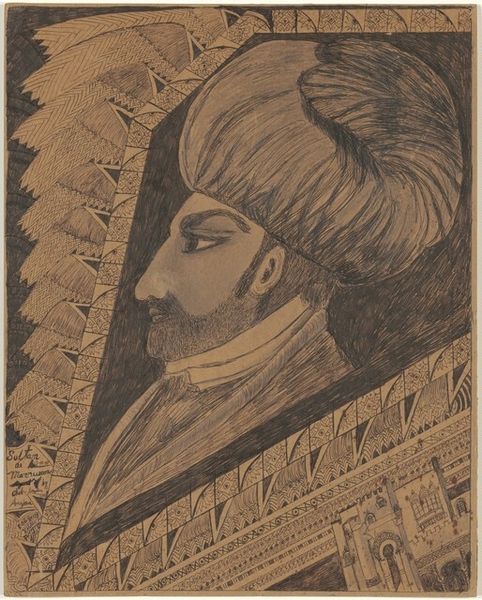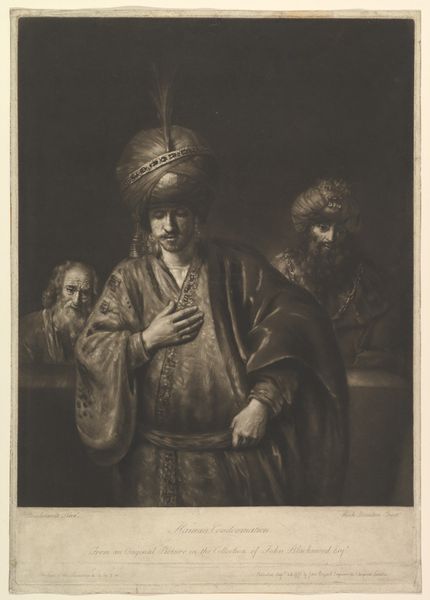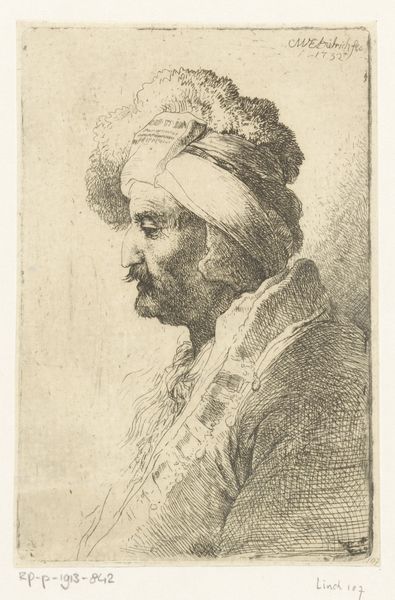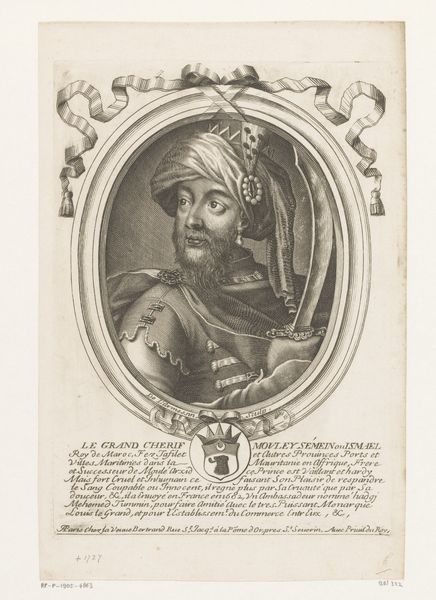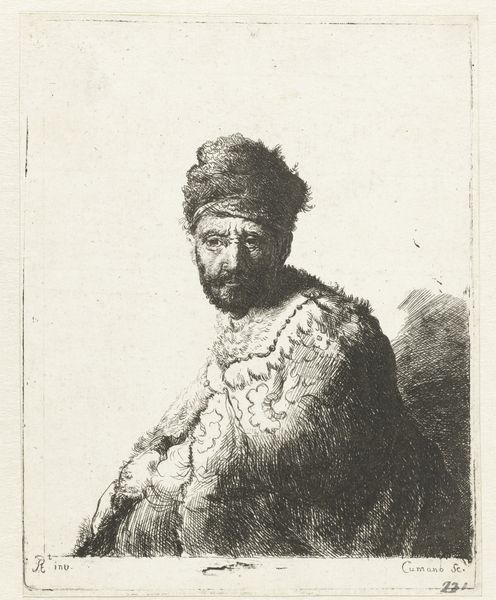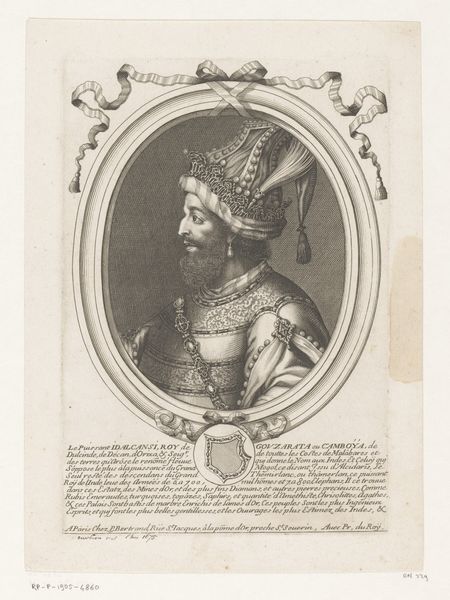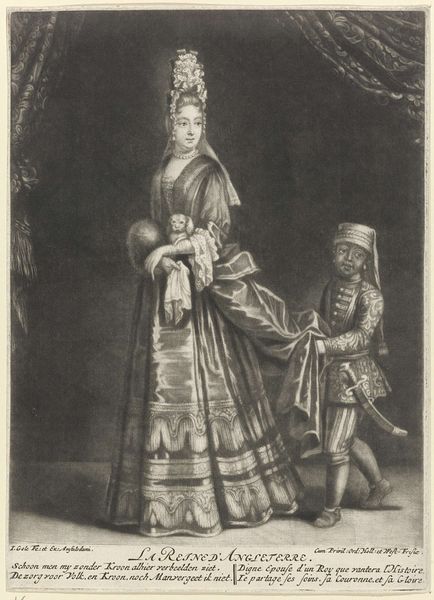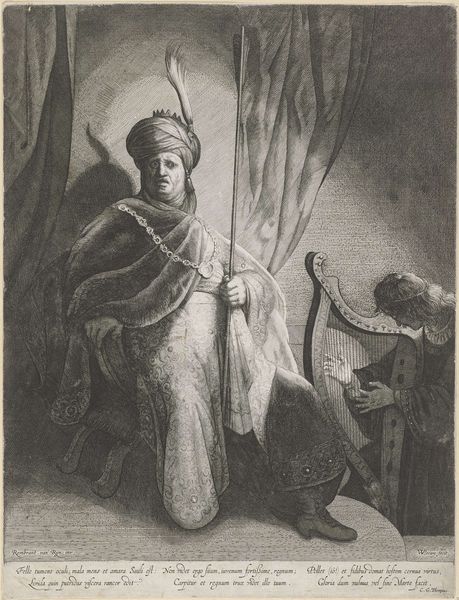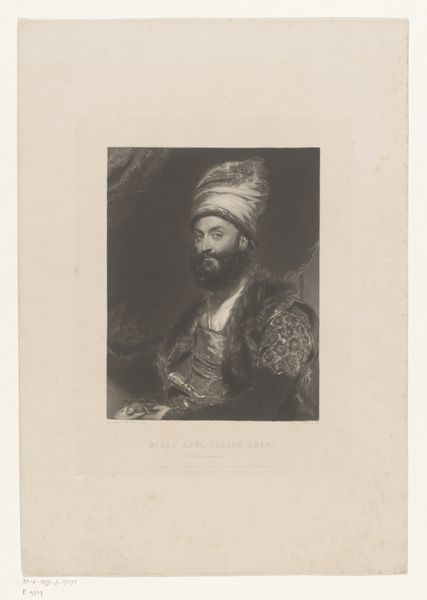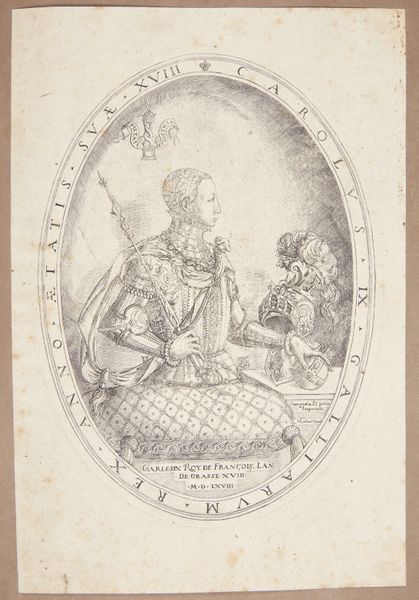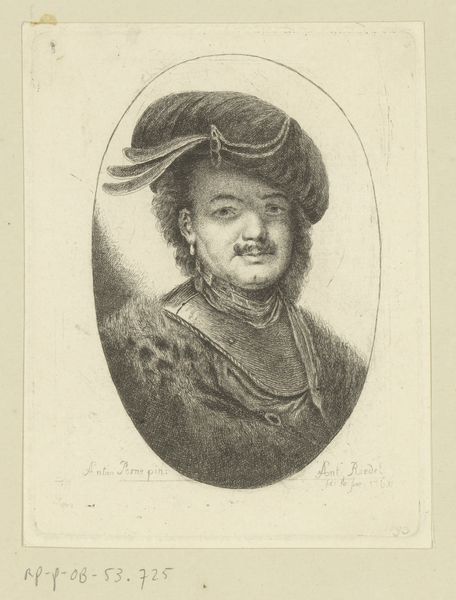
drawing, pencil, charcoal
#
portrait
#
pencil drawn
#
drawing
#
asian-art
#
charcoal drawing
#
pencil drawing
#
pencil
#
portrait drawing
#
charcoal
#
miniature
Dimensions: height 94 mm, width 86 mm
Copyright: Rijks Museum: Open Domain
Rembrandt van Rijn's sketch of 'Shah Jahan and his Son' captures more than just a likeness; it embodies a rich tapestry of cultural symbols. The halo-like light behind Shah Jahan's head is not merely decorative. It signifies divinity, a concept deeply embedded in royal portraiture across cultures, from Byzantine emperors to Renaissance monarchs. Consider the opulent jewels adorning Shah Jahan. They speak of power and wealth but also echo the vulnerability of earthly glory, reminiscent of the 'vanitas' tradition in European art, where material wealth is juxtaposed with the inevitability of decay. The inclusion of his son signifies dynastic continuity, a visual echo of the Madonna and Child, but its meaning has been transformed and imbued with the hopes and anxieties tied to succession. Each motif, each gesture, serves as a signifier in an ongoing dialogue between past and present, reminding us that history is not linear but a cyclical process of rediscovery and reinvention.
Comments
No comments
Be the first to comment and join the conversation on the ultimate creative platform.

